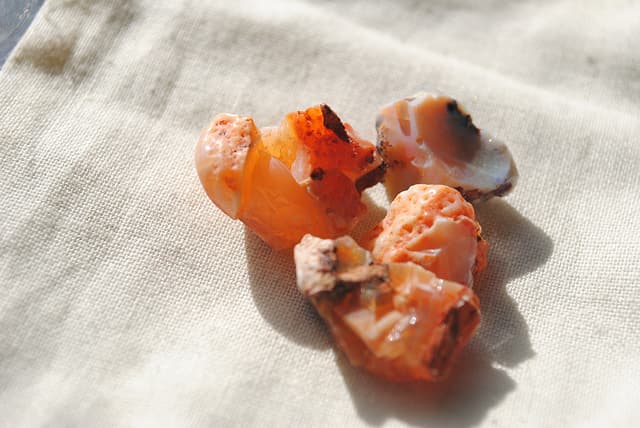How To Dry Opals Safely
Opals should be handled with care. If you buy opals that have been kept in water, follow these instructions to dry them safely.
1 Minute Read
Question
I happened upon some opal in the raw when I was traveling in Honduras. There were ten pieces in a bottle filled with water. The man who sold them to me said I needed to keep them underwater. I'd like to have the opals shaped and polished for my wife as a present, but I've heard that they can crack if they dry out. I've also heard that silicone can be injected into opals for stability. Will that help?
Thanks,
Interested in this topic?
This article is also a part of our Opal Specialist Mini Course, in the unit Introduction to Opals and Their Properties.
Randy
Answer (Part 1)
Before you take your opals to a gem cutter or jewelry maker, you'll have to dry them carefully and slowly. Opals do have significant water content (sometimes as high as 21%). If they dry too quickly they may indeed crack. That's why sometimes they're kept in water until they are sold. It relieves the merchant of the responsibility. (This is also a way to hide flaws. Buying opals kept in water is not recommended).
Take the opals out of the bottle but don't dry them. Put them in a zip lock bag and then put that somewhere that isn't too hot. Leave them there for six months to a year before having them cut.
When you store your finished opals, keep them away from sources of heat or cold and store them in soft, moist cotton. It's not necessary to store them in water, oil, or glycerin. Your opals will be fine as long as you don't subject them to sudden changes in temperature or rough handling. You can consult our opal care guide for more information.
Donald Clark, CSM IMG
Answer (Part 2)
Randy, silicone isn't normally injected into stones. It can be smeared onto stones, which are then placed in a vacuum bowl. When a vacuum is created, the silicone is sucked into the cracks. This is a simple enhancement but it's best conducted by a professional on stones that have already been cut and polished.
Gerald Wykoff, CSM GG
International Gem Society
Related Articles
Opal Stones and Gems: Value, Price, and Jewelry Information
Opal Polishing Survey Results
Tips for Cabbing and Carving Opals
Synthetic Opal Types
Never Stop Learning
When you join the IGS community, you get trusted diamond & gemstone information when you need it.
Get Gemology Insights
Get started with the International Gem Society’s free guide to gemstone identification. Join our weekly newsletter & get a free copy of the Gem ID Checklist!
